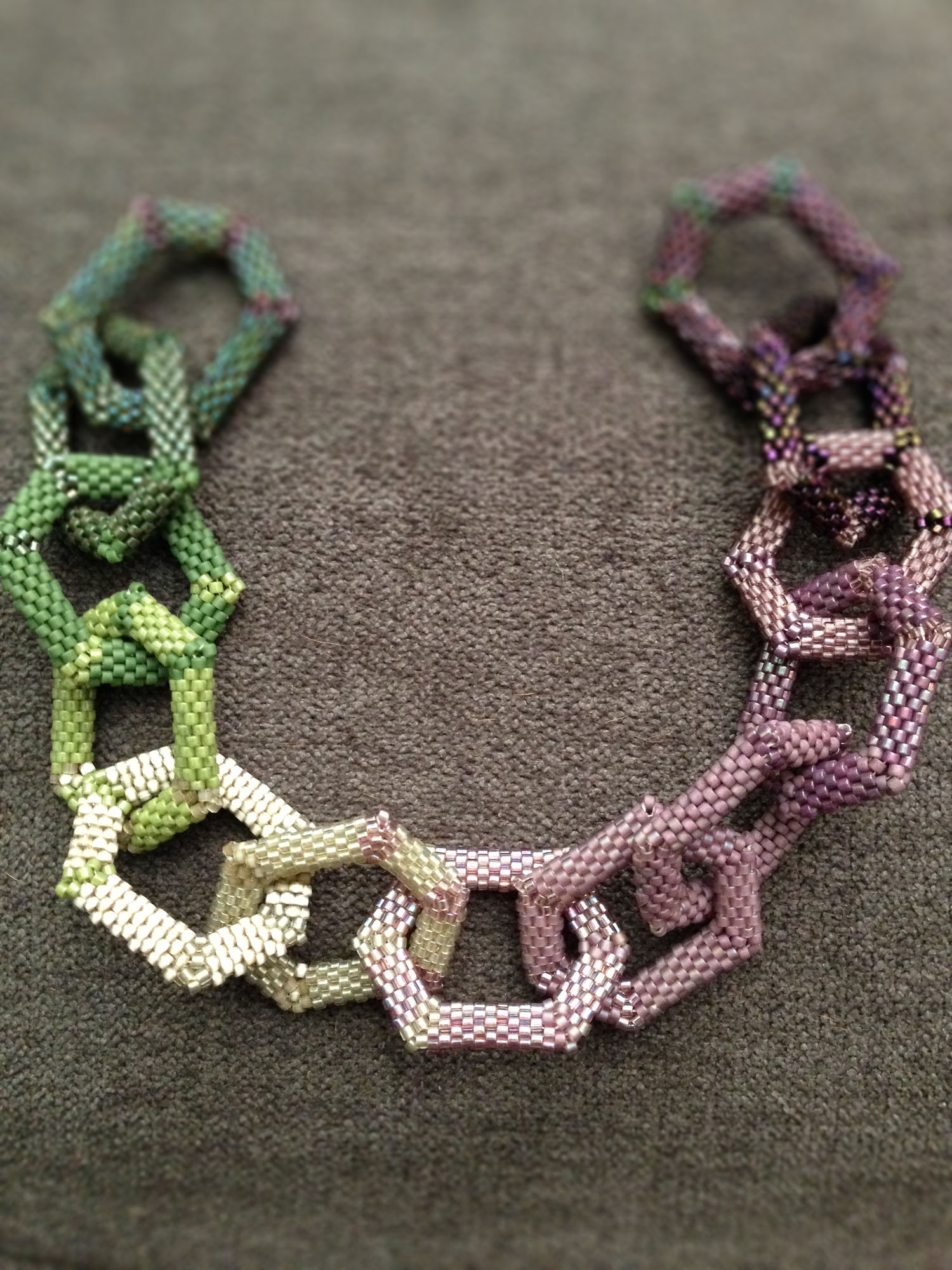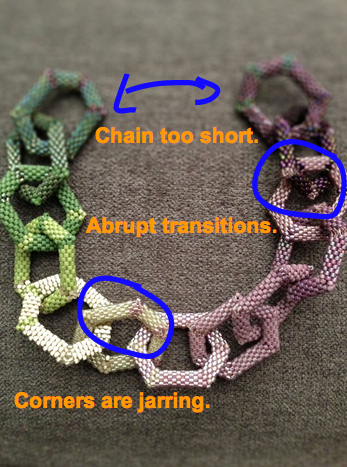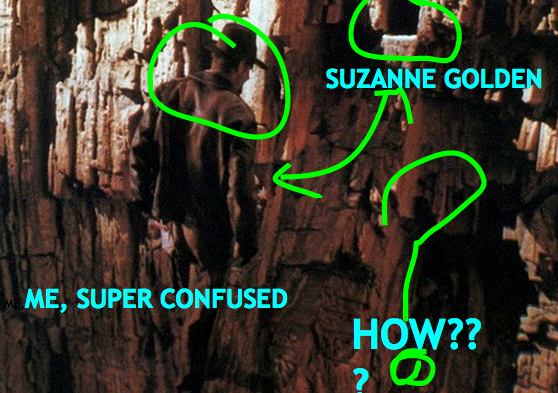Bezeled crystal rivolis: I love them. Love making them, love wearing them. They have the individuality and creativity of handcrafted jewelry, with the sparkle and glamor of big-budget pieces. Over the years I've bought a ton of Swarovski on clearance, found vintage treasures on Etsy, and even scored some discontinued or sample crystal stones from a friend who works for a local retailer. I love to pull all these shinies out and run my hands through them, like a greedy pirate with a treasure chest.
But I'm not as good about actually using them. I never want to turn the glittering potential into something that doesn't live up to my hopes. I'm trying to be better about this: all the bead dreams in the world won't do you any good if you never actually make anything.
So: I started with an inspiration -- there to the left.
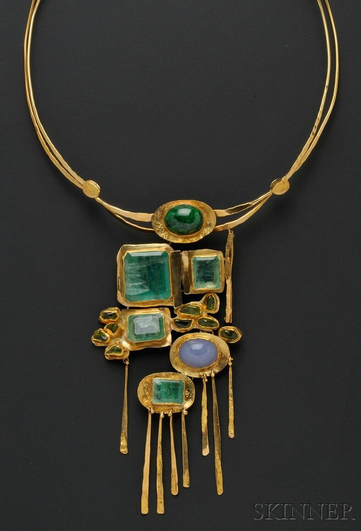
Nice, right? Modern but raw, asymmetric, just the right balance between minimalist and decadent. And totally recreateable with beads: an important consideration.
I realized I had amassed an accidental collection of rivolis of various shapes in shades of blue and green; I pulled out Delicas in a spectrum of gold and amber and went to work. The result? This lovely thing below, which I'm calling the Rivoli Puzzle Bracelet, because putting all the pieces together was something of a puzzle. What started as a pendant or a brooch had to become a bracelet when I realized there was no way this collection of stones could be made symmetrical.

I have taken a couple classes from the great Laura McCabe, whose peyote bezeling technique is unparalleled. (Both books also highly recommended.) There's a bit of improvisation at play here -- navettes are still a bit of a bastard to put bezels around -- but on the whole I think it's one of the most successful pieces I've ever made. I plan on wearing it to every holiday party I'm invited to this year.
The big question as I finished the final bezel was this: how to embellish the peyote base? Ultimately, as with the Citrus Mess bracelet, I decided against embellishment, counting on the shape and color variations to give the piece movement and interest. Any embellishment I thought of sounded fussy and overdone, and would ruin the quiet strength of the developing piece.
Roads Not Taken:
- One thing I learned is that putting a bright solid-color bezel around a lighter unfoiled rivoli means you get reflections, like pebbles on the bottom of a pond. Definitely something I want to try again in a more deliberate way.
- I would love to get stones and Delicas in two contrasting colors and play around with intensity, such as the coral and green colors in this pin.
- Alternatively, I would like to get a set of identical stones and then add embellishment details, such as in this lovely Lalique bracelet.
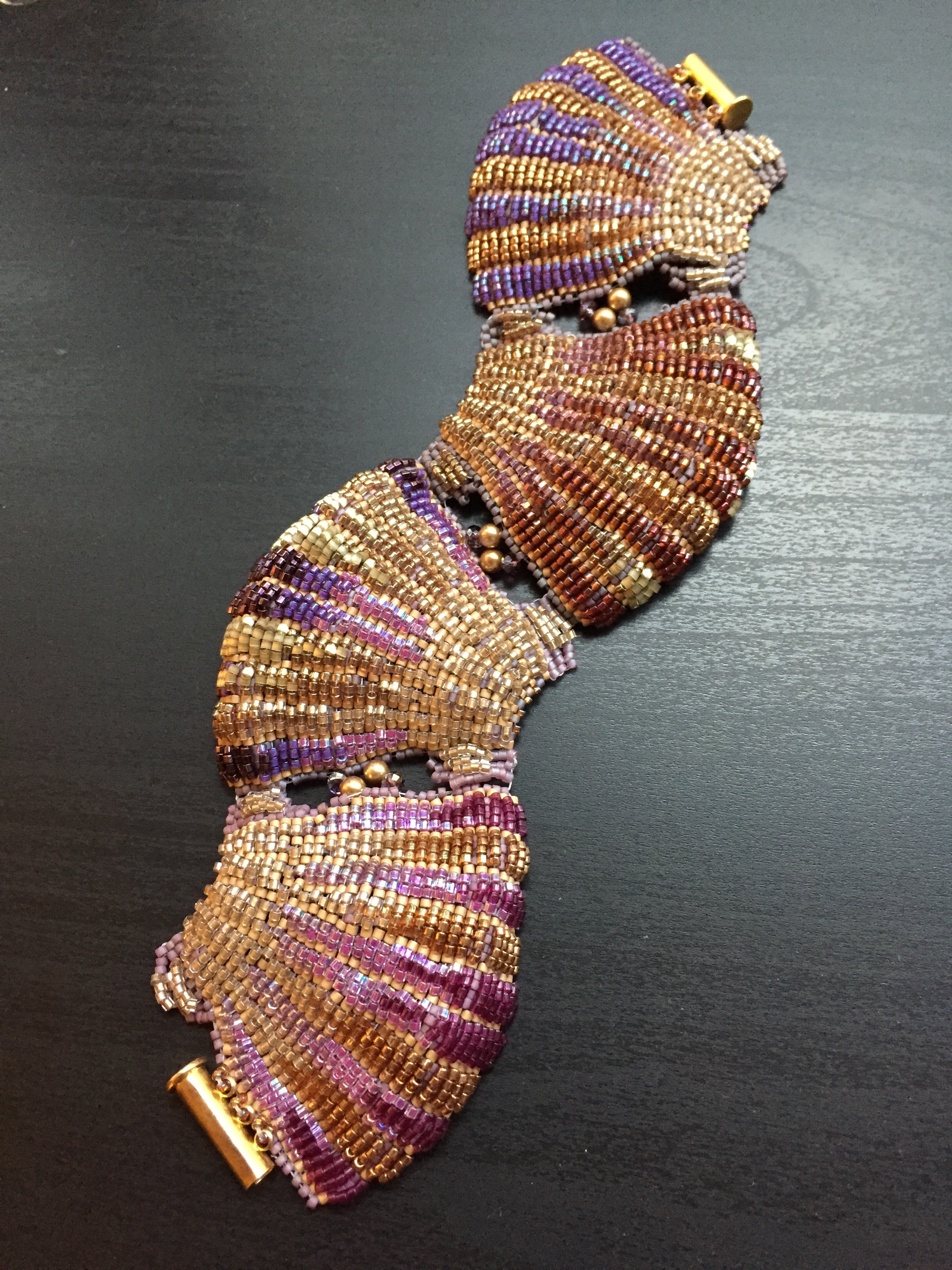 This bracelet was my entry in this year's Fire Mountain Gems and Beads contest, and can you believe it? I was a finalist! It's my third contest and my very first time finalling, so I am naturally a-burst with pride and ambition. The shells are pretty addictive to make, too, so you'll probably be seeing those in future.
This bracelet was my entry in this year's Fire Mountain Gems and Beads contest, and can you believe it? I was a finalist! It's my third contest and my very first time finalling, so I am naturally a-burst with pride and ambition. The shells are pretty addictive to make, too, so you'll probably be seeing those in future.




